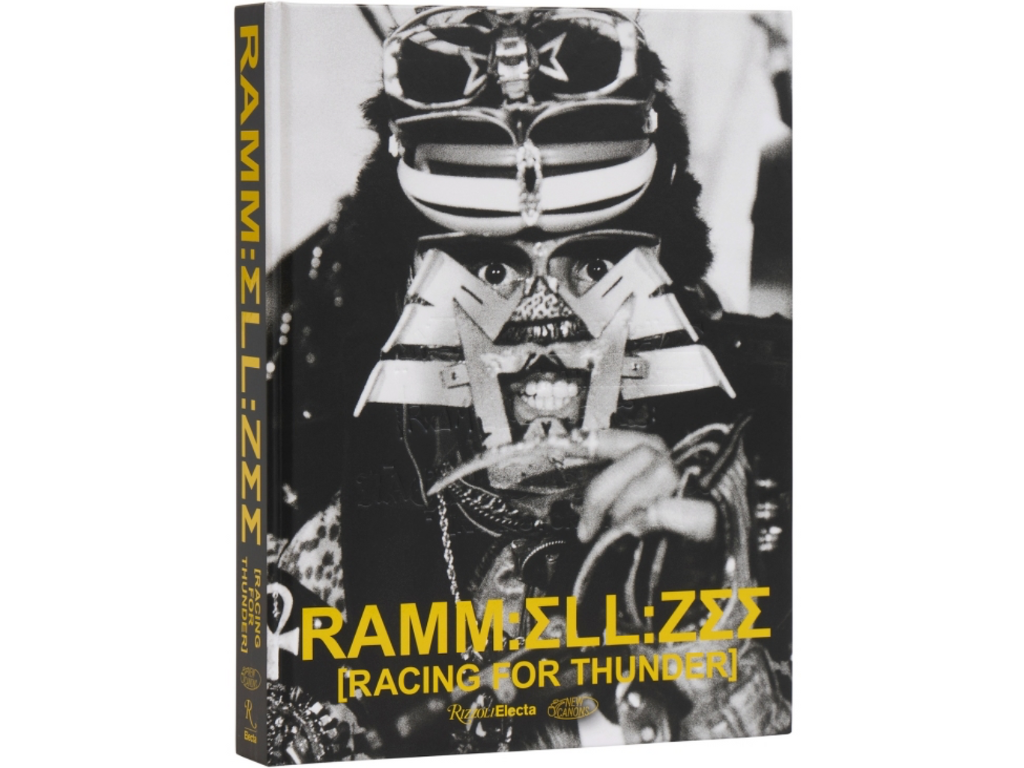In a city of radicals, innovators, and originals, there is only one Rammellzee: a visionary among men who left this earth in 2010 at the age of 50. Hailing from the trenches of Far Rockaway, Queens, Ramm came up as a writer just as graffiti meemerged as the voice of New York. Between 1974 and 1979, he wrote HYTE, EVOL GRILLER, RISK, and BOO, his hand style continuously evolving as the art form took shape. With the emergence of wild style, writers crafted encrypted masterpieces in their battle for dominion on the trains.
As graffiti spread like a virus, it began to cover every inch of the trains, legibility was for squares who played by the rules. “It was made for only us to read ’cause it was a competition of that. They weren’t supposed to read it…. They weren’t supposed to interfere at all. It’s a private warfare…. the real cold war.” Ramm is quoted as saying in RAMMΣLLZΣΣ: Racing for Thunder (Rizzoli Electa), the first major monograph devoted to the artist’s life and work.

Edited by Maxwell Wolf, lead curator of the 2018 retrospective of the same name, the 384-page book is a publishing tour de force that embraces defiance and resistance as its starting point. Wolf and co-editor Jeff Mao consider Ramm as a multiplicity, rather than a fixed point, imagining his story as an oral history rather than a biography. Racing for Thunder brings together the stories and memories of Ramm’s expansive cohort of artists, musicians, gallerists, and family members including graffiti writers LEE Quiñones , Lenny “FUTURA” McGurr, Chris “DAZE” Ellis; filmmakers Charlie Ahearn and Jim Jarmusch; and photographer Henry Chalfant.
Born 1960, Ramm and his brother KP grew up in Far Rockaway, Queens when de facto segregation shaped the landscape of New York. Born to a Black mother who left Orangeburg, South Carolina, during the Great Migration, and an Italian father who abandoned the family when the boys were very young, Ramm learned to stand his ground. From a young age he had a passion for model planes, ships, and cars, refashioning them to meet his standards rather than rotely follow the directions.

Rammellzee in his Tribeca apartment, the Battlestation, New York, c. 1991. Photo: Reproduced with permission of Stop Smiling Media LLC. Originally appeared in How to Wreck a Nice Beach by Dave Tompkins
Graffiti became the gateway to another dimension of sight and sound, which Ramm would take far beyond anyone’s wildest imagination. He emerged fully formed in 1979, legally changing his name to the mathematical equation RAMM:ΣLL:ZΣΣ at the age of 18 in order to officially renounce his identity as a human being. His name was a strategy for war, his life and art inextricably intertwined as revolution made form. It was the act of a true nonconformist one that remains avant-garde yet wholly prophetic of the century that now unfolds before our very eyes.
Ramm’s first treatise, titled IONIC TREATISE GOTHIC FUTURISM ASSASSIN KNOWLEDGES OF THE REMANIPULATED SQUARE POINT’S ONE TO 720°, set the tone. Linguistics, perhaps the most subtle and entrenched structure of thought, had been corrupted in the service of empire and the time had come to fight back. Letterforms became his weapon of choice. If the beginning is the Word, Ramm existed before all of that — in the very cosmos of the alphabet itself. Like William Blake, Sun Ra, and Hilma af Klint, he was a world builder with the air of a prophet. Working across painting, sculpture, and performance, he manifest a universe equal parts prophecy and resistance.

Rammellzee holding one of his sculptures (title unknown) for the Italian magazine LEI, Tony Shafrazi Gallery, New York, 1981. Photo: Gilles Tapie, courtesy of Seth Tillett
“Ramm was a pool of contradictions: incredibly charming, a complete style icon, dogmatic, cruel, hilarious; he encompassed multitudes, but at his core, he was an iconoclast,” says Wolf. “Like David Hammons, Marcel Duchamp, and other artists who continually pushed against the boundaries of the system they operated in, Ramm was marked by strategies of defiance and subversion. He not only refused to be commodified in the contemporary art world, but actually tried to commodify the art market. He was very transparent about making work that sells and playing with the dynamics of buyers, sellers, and galleries.”
Conceived as a collective history, Racing for Thunder unfolds as an epic myth as Ramm full transforms art into life itself as an act of survival. Here, layered in the vivid memories, intimate snapshots, hypnotic artworks, electric ephemera, and meticulous documentation, lies an enigmatic warrior who refused to compromise. “He’s like a modern-day samurai: they spend days on end, months or whatever, to construct these iconic armaments on themselves to die in honor, knowing that they might die by the sword within ten seconds of battle,” Lee Quiñones says in the book. “Ramm, he wasn’t far from any battle. He was surrounded by many battles, and he was arming himself. I saw the temperature in that photo where Jean is relaxed, but Ramm is like, ‘I’m ready for battle.'”

The RAMM:ΣLL:ZΣΣ: the artist clad in the fully formed iteration of his exoskeleton, the Gasholear, c. early 1990s. Photo: Courtesy of the Estate of Rammellze

Follow Miss Rosen on Twitter






